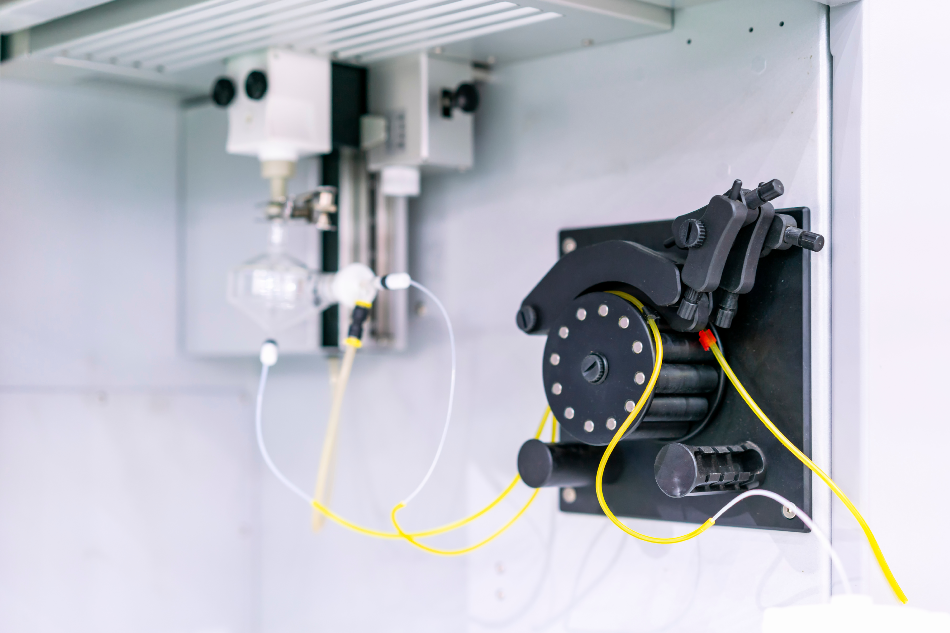
Surasak_Photo / Shutterstock
Optical Emission Spectroscopy (OES) is a widely used analytical technique used to determine the elemental composition of a broad range of metals. It is an extremely time-efficient and accurate method for determining the constituents of a variety of metals and alloys.
OES is often referred to as a “spark test”. It is so because it uses a sparking process where an electrical discharge is applied to the area under analysis. As a result of the spark, a small amount of material vaporizes which creates a distinct chemical signature. This helps in the determination of the elemental breakdown of the metal under consideration.
Applications of Optical Emission Spectroscopy
Metallurgy
OES offers rapid elemental analysis of solid metal samples, making it indispensable for quality control in steel making and aluminum metallurgy processes.
Rare Earth Analysis (Bastnasite)
Bastnasite is a mineral of lanthanide rare earth type. Two of the major challenges of analyzing rare-earth with atomic absorption spectrophotometers are (a) the difficulty to obtain a light source lamp and (b) difficulty of atomization due to oxides generated from rare earth. These problems are eliminated with Inductively Coupled Plasma OES (ICP-OES).
Plasma Manufacturing Systems
OES is an established diagnostic technique for plasma processes. It detects light from the electronic transitions of atoms and molecules and, thereby, identifies the chemicals present in plasma. It is one of the most widely used techniques in modern electronics manufacturing, particularly concerning the manufacture of integrated circuits (ICs). Large-scale ICs can contain as many as 400 different individual layers.
For proper functionality of the IC, it is critical during the etching process that the material from the newly applied layer being etched is removed completely without damaging the layers below.
Plasma etching must also be performed in a vacuum to prevent deposits of unwanted contaminants. What makes the OES application ideal in this setting is the fact that a massive amount of light is emitted in this process when vast amounts of energy are transferred to the ionized material.
Human Hair & Fingernail Analysis
Research has revealed that the metabolism of several trace elements present in human hair and fingernails have specific roles in the pathogenesis of diseases such as Diabetes mellitus and Hypertension. OES can help in the detection of such trace elements in the human body and, thereby, aid in proper diagnosis.
High Current Proton Sources
OES is a very reliable technique for carrying out non-invasive measurements of plasma density and plasma temperature. It can also characterize the different populations of neutrals and ionized particles constituting the plasma.
Real-time Tissue Differentiation
Complete surgical removal of cancer tissue with the effective preservation of healthy tissue is one of the most important challenges in modern oncology and the medical profession in general. Real-time, in situ differentiation of tissue based on optical emission spectroscopy (OES), performed during electrosurgery not requiring any biomarkers or additional light sources has recently been developed.
The analysis of the optical emission spectra enables the differentiation between healthy and tumorous tissue. By using multi-class support vector machine (SVM) algorithms, distinguishing between tumor types is also possible. Due to its fast reaction time (0.05 seconds), this method can be used for real-time navigation. This highly efficient and time-saving technique helps the surgeon achieve complete resection.
Summary
Optical Emission Spectroscopy is a popular analytical technique that has wide-ranging applications. Recent research has shown that this technique can be used to analyze samples such as steel, alloy, metal, geological, biological, and environmental.
OES is also very versatile as it can be used for solid, liquid, and gaseous samples.
Disclaimer: The views expressed here are those of the author expressed in their private capacity and do not necessarily represent the views of AZoM.com Limited T/A AZoNetwork the owner and operator of this website. This disclaimer forms part of the Terms and conditions of use of this website.